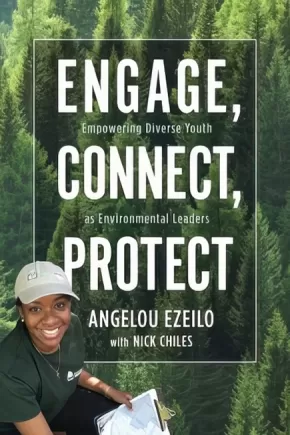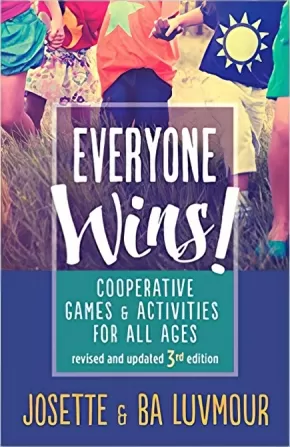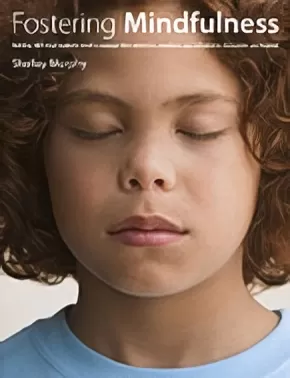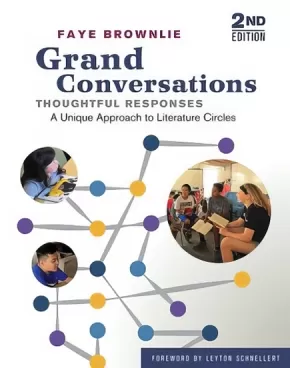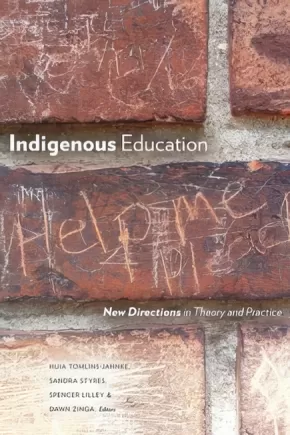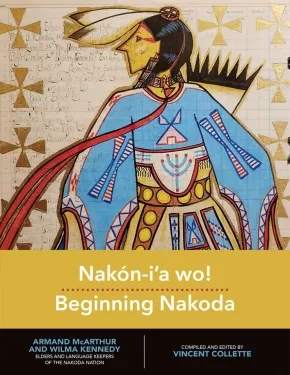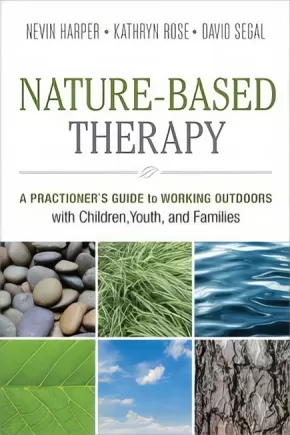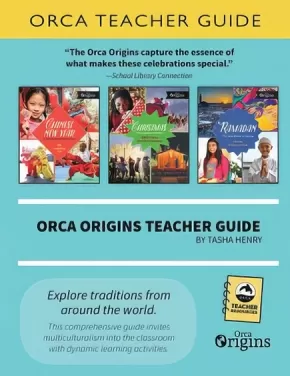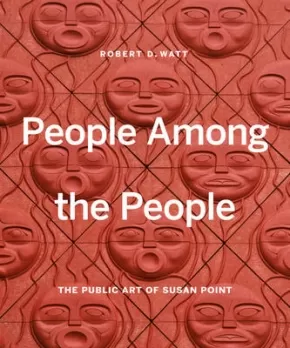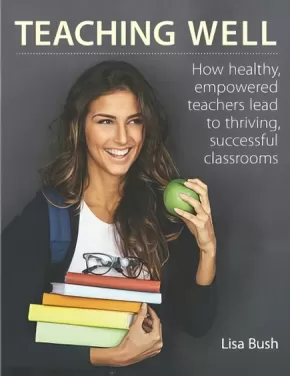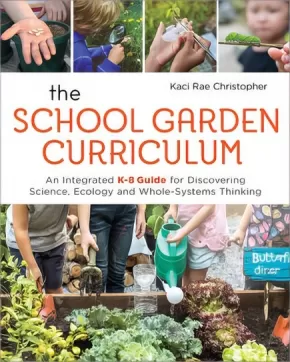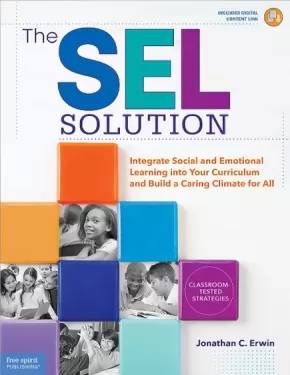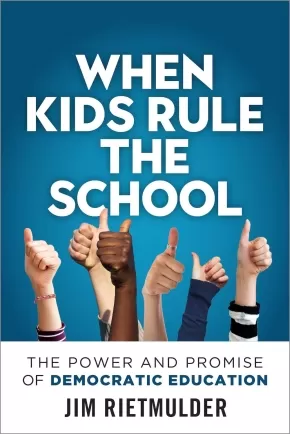
Educator Resources
106
-
120
of
214 Results;
Sort By
Go To
of 15
Engage, Connect, Protect: Empowering Diverse Youth as Environmental Leaders
$19.99
Format:
Paperback
Text Content Territories:
Indigenous American; Native American;
ISBN / Barcode: 9780865719187
Synopsis:
Synopsis:
Building environmental strength through a diversity of youth.
While concern about the state of our land, air, and water continues to grow, there is widespread belief that environmental issues are primarily of interest to wealthy white communities. Engage, Connect, Protect explodes this myth, revealing the deep and abiding interest that African American, Latino, and Native American communities – many of whom live in degraded and polluted parts of the country – have in our collective environment.
Part eye-opening critique of the cultural divide in environmentalism, part biography of a leading social entrepreneur, and part practical toolkit for engaging diverse youth, Engage, Connect, Protect covers:
- Why communities of color are largely unrecognized in the environmental movement
- Bridging the cultural divide and activate a new generation of environmental stewards
- A curriculum for engaging diverse youth and young adults through culturally appropriate methods and activities
- A resource guide for connecting mainstream America to organizations working with diverse youth within environmental projects, training, and employment.
Engage, Connect, Protect is a wake-up call for businesses, activists, educators, and policymakers to recognize the work of grassroots activists in diverse communities and create opportunities for engaging with diverse youth as the next generation of environmental stewards.
Educator Information
While this work has a US focus, it is still extremely relevant in other countries like Canada.
Additional Information
256 pages | 6.00" x 9.00"
Everyone Wins! Cooperative Games and Activities for All Ages 3rd Edition
$16.99
Format:
Paperback
ISBN / Barcode: 9780865719026
Synopsis:
Synopsis:
Over 25,000 copies sold — promote optimal well-being and social justice through 170+ games and activities for all ages.
At this critical point of human evolution, we want our children to have the ability to resolve conflict, communicate positively, build social skills, and increase self-esteem so that they may actualize their potential and live in well-being.
The highly sought-after 3rd edition of the best-selling, Parent Choice Award-winning book Everyone Wins: Cooperative Games and Activities for All Ages features over 170 well-designed cooperative games and activities. Developmentally appropriate and indexed according to age level, group size, activity level, and location, Everyone Wins offers great value through evaluating interpersonal dynamics, teaching social justice, and assessing development capacities.
By popular request, new features include:
- Information on development and learning in children and youth
- New and updated games and activities
- An overview of Natural Learning Relationships for whole-child development
Everyone Wins is an easy to use, quick reference guide for everyone who cares for and about children, education, and the actualization of social well-being in a diverse range of environments.
Reviews
"Everyone Wins! can be used during PE classes—in the gym or on the school field—during recess breaks, in the classroom, or in outdoor education time. Playing the games as suggested in the book would be a great way to start, and after some practice, students could help to create variations. For intermediate students, this could also lead to the students inventing their own games to share with their classmates, allowing them to become the teachers during PE classes" - Cindy Haack, Canadian Teacher Magazine, Fall 2019 Issue
Additional Information
176 pages | 5.50" x 8.50" | 5 illustrations | 3rd Edition
Fostering Mindfulness: Building Skills that Students Need to Manage Their Attention, Emotions, and Behavior in Classrooms and Beyond (1 in stock, in reprint)
$28.95
Format:
Paperback
ISBN / Barcode: 9781551383408
Synopsis:
Synopsis:
An essential guide to mindfulness activities and strategies that help students cultivate the skills they need for self-regulation, stress management, and learning. Simple activities and practices throughout the book are designed to strengthen areas of the brain that allow students to better manage their attention, emotions, and behavior in the classroom and beyond. Child-friendly language is used to explain mindfulness, physiology, and brain science.
This practical book shows you how to incorporate mindfulness in your classroom practice in just minutes a day, and includes definitions, teaching tips, and activities for
- making mindful breathing a core foundational practice
- using the five senses as anchors for mindfulness
- helping students recognize, name, and manage their feelings
- exploring the connection between body and mind through movement
- incorporating practices that encourage students to focus their attention in the present moment
- creating and using a Peace Corner in the classroom that is devoted to self-regulation and self-care
- developing habits of mind that are central to resilience
This comprehensive resource offers step-by-step instructions, scripts, activity sheets, ready-to-use templates, and scientific insights. Based on extensive classroom experience, this highly readable book includes stories from teachers who successfully incorporate mindfulness in their classroom practice.
Ideal for new and experienced teachers, Fostering Mindfulness is committed to building skills that nurture attention, cognitive and emotional development, and overall well-being.
Educator Information
Recommended for educators teaching ages 5 - 13.
Additional Information
167 pages | 8.30" x 10.80"
Freewriting with Purpose: Simple Classroom Techniques to Help Students Make Connections, Think Critically, and Construct Meaning
$32.95
Format:
Paperback
ISBN / Barcode: 9781551383392
Synopsis:
Synopsis:
Simple classroom techniques for to help students make connections, think critically, and construct meaning
In freewriting, we write continuously: we begin with a prompt and keep our pen or pencil moving throughout the entire duration. We do not stop to question or censor ourselves; we do not concern ourselves with spelling, punctuation, capitalization, or grammar; we do not let critical thoughts creep into our freewriting time. This book shows teachers how to use freewriting to help kids write well and more, regardless of grade level, subject, time of day, or time of year. It is not a difficult process to implement and yet it makes a significant difference in teacher attitudes, student confidence, and, ultimately, student writing abilities.
Educator Information
Recommended for educators of children ages 5 - 13.
Additional Information
144 pages | 8.30" x 10.80"
Grand Conversations, Thoughtful Responses: A Unique Approach to Literature Circles
$26.00
Format:
Paperback
Grade Levels: University/College;
ISBN / Barcode: 9781553798774
Synopsis:
Synopsis:
Grand Conversations, Thoughtful Responses is built upon the premise that all students can become active, independent, thoughtful readers. The structures and strategies in this book are proven to help students develop confidence and competence in their reading.
Student engagement with text soars through participation in grand conversations with peers and reflecting on reading with thoughtful, written responses. This unique approach includes:
- student choice in books
- students reading at their own pace, thus creating flexible groups
- literature circle groups where students discuss the shared text they are reading
- strategies for teaching written response
- strategies for co-creating assessment criteria
- additional activities to develop and deepen comprehension
- book lists
Reviews
"With this unique approach to literature circles, our students are reading more, are writing more and are excited about talking about their books! The enthusiasm in the class is contagious with even our more reluctant readers wanting more time – and more books - to read. It is a pleasure to join a group and participate in the conversation. Our students’ ability to make deep connections to one and other and to their reading is amazing." - Tanis Anderson, Literacy Programme Consultant, K-12 and a team of Burnaby teachers
Educator Information
Faye Brownlie is one of British Columbia's most sought-after literacy and learning experts. She works in staff development locally, nationally and internationally and has been a long-time advocate of improved learning for all students in inclusive settings.
What distinguishes this book’s approach is that it advocates students having a choice in what and how much they read, which in turn grows strong, thoughtful, sophisticated readers.
Additional Information
100 pages | 6.00" x 9.00" | 2nd Edition
Indigenous Education: New Directions in Theory and Practice
$45.99
Editors:
● Spencer Lilley (Indigenous New Zealander; Maori; Te Ati Awa; Ngapuhi; Muaupoko ;)
● Sandra Styres (Indigenous Canadian; First Nations; Haudenosaunee (Iroquois); Kanyen'keha:ka (Mohawk);)
● Huia Tomlins-Jahnke (Indigenous New Zealander; Maori; Ngati Toa Rangatira; Ngati Kahungunu; Ngapuhi; Ngati Hine; Ngai Tahu;)
 Show More ...
Show More ...
● Sandra Styres (Indigenous Canadian; First Nations; Haudenosaunee (Iroquois); Kanyen'keha:ka (Mohawk);)
● Huia Tomlins-Jahnke (Indigenous New Zealander; Maori; Ngati Toa Rangatira; Ngati Kahungunu; Ngapuhi; Ngati Hine; Ngai Tahu;)
Format:
Paperback
Text Content Territories:
Indigenous Canadian; Indigenous New Zealander;
Grade Levels: University/College;
ISBN / Barcode: 9781772124149
Synopsis:
Synopsis:
For Indigenous students and teachers alike, formal teaching and learning occurs in contested places. In Indigenous Education, leading scholars in contemporary Indigenous education from North America and the Pacific Islands disentangle aspects of education from colonial relations to advance a new, Indigenously-informed philosophy of instruction. Broadly multidisciplinary, this volume explores Indigenous education from theoretical and applied perspectives and invites readers to embrace new ways of thinking about and doing schooling. Part of a growing body of research, this is an exciting, powerful volume for both Indigenous and non-Indigenous scholars, researchers, policy makers, and teachers, and a must-read for anyone who wants to understand the contested spaces of contemporary education.
Contributors: Jill Bevan Brown, Frank Deer, Wiremu Doherty, Dwayne Donald, Ngarewa Hawera, Margie Hohepa, Robert Jahnke, Trish Johnston, Spencer Lilley, Daniel Lipe, Margie Maaka, Angela Nardozi, Kapa Oliviera, Wally Penetito, Michelle Pidgeon, Leonie Pihama, Jean-Paul Restoule, Mari Ropata Te Hei, Sandra Styres, Huia Tomlins-Jahnke, Linda Tuhiwai Smith, Sam L. No’eau Warner, Laiana Wong, Dawn Zinga
Additional Information
480 pages | 6.00" x 9.00"
Indigenous Peoples and Dementia: New Understandings of Memory Loss and Memory Care
$32.95
Format:
Paperback
Text Content Territories:
Indigenous American; Indigenous Canadian;
Grade Levels: University/College;
ISBN / Barcode: 9780774837842
Synopsis:
Synopsis:
Dementia is on the rise around the world, and health organizations in Canada, the United States, and New Zealand are responding to the urgent need – voiced by communities and practitioners – for guidance on how best to address memory loss in Indigenous communities. This innovative volume responds to the call by bringing together, for the first time, research studies and Indigenous teaching stories on this topic. Using decolonizing methods, it addresses key areas of concern with chapters that:
- examine the prevalence and causes of dementia, as well as the public discourse surrounding the issue
- provide examples for incorporating Indigenous perspectives on care and prevention into research and practice
- demonstrate culturally safe applications of research to Elder care.
Presenting strategies for health practice and effective collaborative research informed by Indigenous knowledge and worldviews, this book is a valuable resource for researchers, practitioners, students, and educators who seek a better understanding of memory loss and memory care.
This book will be of interest to students, educators, researchers, and practitioners working in or interested in the fields of dementia studies and Indigenous health.
Reviews
"This book represents the first significant contribution to what we know about how Indigenous peoples understand dementia and memory loss." - from the foreword by Rod McCormick (Kanienkehaka), professor and British Columbia Innovation Council research chair in Aboriginal Health, Faculty of Education and Social Work, Thompson Rivers University
"A leap forward in understanding how health care can be provided in culturally safe ways." - Lloy Wylie, assistant professor, Schulich School of Medicine and Dentistry, Western University
Educator Information
Table of Contents
Foreword / Rod McCormick
Introduction / Wendy Hulko, Jean E. Balestrery, and Danielle Wilson
We Call It Healing / Secwepemc Elder, Wendy Hulko, Danielle Wilson, Star Mahara, Gwen Campbell-McArthur, Jean William, Cecilia DeRose, and Estella Patrick Moller
Part 1: Prevalence, Causes, and Public Discourse
1 Current and Projected Dementia Prevalence in First Nations Populations in Canada / Jennifer Walker and Kristen Jacklin
2 Indigenous Vascular Dementia: An Indigenous Syndemic Dementia Model / J. Neil Henderson, Linda D. Carson, and Kama King
3 A Story about Joe in the News Media: Decolonizing Dementia Discourse / Suzanne MacLeod
Coyote: Keeper of Memories / Danielle Wilson, Gwen Campbell-McArthur, Wendy Hulko, Star Mahara, Jean William, Cecilia DeRose, and Estella Patrick Moller
Part 2: Indigenous Perspectives on Care and Prevention
4 Perceptions of Dementia Prevention among Anishinaabe Living on Manitoulin Island / Jessica E. Pace, Kristen Jacklin, Wayne Warry, and Karen Pitawanakwat
5 The Understanding from Within Project: Perspectives from Indigenous Caregivers / Carrie Bourassa, Melissa Blind, Kristen Jacklin, Eric Oleson, and Kate Ross-Hopley
6 Oldest Age Does Not Come Alone: “What’s the Name of the Day?” / Mere Kēpa
A Fecund Frontier: We Listen ... in between Talk ... We Listen / Jean E. Balestrery and Sophie “Eqeelana Tungwenuk” Nothstine
Part 3: Applying Theory and Knowledge to Practice
7 Depression, Diabetes, and Dementia: Historical, Biocultural, and Generational Factors among American Indian and Alaska Native Elders / Linda D. Carson, J. Neil Henderson, and Kama King
8 Adapting CIRCA-BC in the Post-Residential-School Era / Barbara Purves and Wendy Hulko
9 Focus(ing) on Love and Respect: Translating Elders’ Teachings on Aging and Memory Loss into Learning Tools for Children and Youth / Wendy Hulko, Danielle Wilson, and Jessica Kent
Conclusion / Wendy Hulko, Jean E. Balestrery, and Danielle Wilson
Index
Additional Information
264 pages | 6.00" x 9.00"
Nakón-i'a wo! Beginning Nakoda
$34.95
Editors:
Format:
Coil Bound
Text Content Territories:
Indigenous Canadian; First Nations; Assiniboine (Nakoda Oyadebi);
ISBN / Barcode: 9780889776623
Synopsis:
Synopsis:
Nakón-i'a wo! Beginning Nakoda is a language resource designed to help revitalize and document Nakoda, now spoken in Manitoba and Saskatchewan.
Written for beginning learners of Nakoda (also known as Assiniboine), this workbook, arranged thematically, provides a Nakoda/English lexicon, a vocabulary, a table of kinship terms, a glossary of linguistic terminology, and exercises to do after each lesson.
This book was made possible with the assistance of Elders and Language Keepers of the Nakoda Nation: Armand McArthur and Wilma Kennedy, Main Consultants; with additional contributions by Pete Bigstone, Leona Kroscamp, Freda O'Watch, and Ken Armstrong.
Educator & Series Information
Recommended for Grades 7+
Part of the Indigenous Languages for Beginners series.
Additional Information
304 pages | 8.50" x 11.00" | Black and white illustrations throughout
Nature-Based Therapy: A Practitioner's Guide to Working Outdoors with Children, Youth, and Families
$34.99
Format:
Paperback
ISBN / Barcode: 9780865719132
Synopsis:
Synopsis:
Take your therapeutic practice with children, youth, and families out into nature.
The number of children, youth, and families seeking help for a wide range of mental health concerns is growing at an alarming rate, and many struggle to thrive despite well-intentioned interventions from skilled helpers. Unplugging from technology and reconnecting with the web of life is a powerful antidote to the highly technological and fast-paced realities of so many.
Nature-Based Therapy addresses this underlying disconnection between humans and their ecological home, exploring theories and therapeutic practices undertaken with children, youth, and families, including:
- Developing sensory awareness of outer and inner landscapes
- Navigating risk in play
- Case examples with a diverse range of settings, intentions, and interventions.
Nature-Based Therapy is for counselors, therapists, youth and social workers, educators, and parents working in educational and therapeutic settings who want to take their practice beyond the office walls and into the powerful terrain of the wild, partnering with nature as a co-facilitator to create lasting change.
Additional Information
304 pages | 6.00" x 9.00"
Orca Origins Teacher Guide (1 in Stock)
$29.95
Format:
Paperback
ISBN / Barcode: 9781459822443
Synopsis:
Synopsis:
Orca Origins is a nonfiction series for middle readers that explores cultural traditions around the world. This guide helps educators use the Orca Origins series to build an inquiry-based unit plan that focuses on the diverse traditions from different cultural celebrations around the world and teaches students tolerance. This is done with a variety of dynamic learning activities, handouts and graphic organizers to support students’ learning. The guide includes introductions to six Orca Origins titles: Birthdays, Chinese New Year, Christmas, Diwali, Passover, and Ramadan.
Key Points:
- In the current climate of divisiveness, it is now more important than ever to encourage multicultural understanding -- this guide shows educators how to do that in the classroom.
- Tasha Henry is an experienced educator who holds a Master of Education in Language, Culture, and Teaching.
- Themes include inquiry-based learning, responsive teaching, multicultural education, teaching to diversity.
Additional Information
48 pages | 11.00" x 8.50"
People Among the People: The Public Art of Susan Point
$60.00
Artists:
Format:
Hardcover
Text Content Territories:
Indigenous Canadian; First Nations; Salish; Coast Salish; Musqueam;
ISBN / Barcode: 9781773270425
Synopsis:
Synopsis:
“I feel that it is important to re-establish our Salish footprint upon our lands, to create a visual expression of the link between the past and present that is both accessible and people-friendly. . . . I create unique, ‘original’ artwork that honours both my people and the diverse group of peoples from around the world who have come to live upon our lands on the Northwest Coast. My hope is that my art leaves a lasting impression on visitors, locals, and the surrounding communities.” — Susan Point
This beautifully designed book is the first to explore Susan Point's publicly commissioned artworks from coast to coast.
Susan Point’s unique artworks have been credited with almost single-handedly reviving the traditional Coast Salish art style. Once nearly lost to the effects of colonization, the crescents, wedges, and human and animal forms characteristic of the art of First Nations peoples living around the Salish Sea can now be seen around the world, reinvigorated with modern materials and techniques, in her serigraphs and public art installations—and in the works of a new generation of artists that she’s inspired.
People Among the People beautifully displays the breadth of Susan Point’s public art, from cast-iron manhole covers to massive carved cedar spindle whorls, installed in locations from Vancouver to Zurich. Through extensive interviews and access to her archives, Robert D. Watt tells the story of each piece, whether it’s the evolution from sketch to carving to casting, or the significance of the images and symbolism, which is informed by surviving traditional Salish works Point has studied and the Oral Traditions of her Musqueam family and elders.
In her long quest to re-establish a Coast Salish footprint in Southwest British Columbia and the Pacific Northwest of the US, Point has received many honours, including the Order of Canada and the Audain Lifetime Achievement Award. This gorgeous and illuminating book makes it clear they are all richly deserved.
Additional Information
208 pages | 10.17" x 12.39" | Colour photographs throughout | Hardcover
Teaching Well: How Healthy, Empowered Teachers Lead to Thriving, Successful Classrooms
$28.95
Format:
Paperback
ISBN / Barcode: 9781551383378
Synopsis:
Synopsis:
How can teachers balance the needs of busy overwhelming classrooms with the needs of their own health and well-being? This remarkable book shows you how embracing a healthy lifestyle is not only beneficial for teachers, but for students, classrooms, and schools, too. It suggests that teachers can reduce the amount of time they work outside the classroom and still be a motivated and engaged teacher. Promoting a healthy work–life balance for teachers, the book explores how to avoid burnout while still creating an effective learning community in your classroom. The conversational tone of the book, along with a wealth of anecdotal examples, will make this highly readable resource an invaluable guide for every educator.
On Twitter: #teachingwell
Educator Information
For ages 5 - 13.
Additional Information
116 pages
The School Garden Curriculum: An Integrated K-8 Guide for Discovering Science, Ecology, and Whole-Systems Thinking
$49.99
Format:
Paperback
ISBN / Barcode: 9780865719057
Synopsis:
Synopsis:
Sow the seeds of science and wonder and inspire the next generation of Earth stewards.
The world needs young people to grow into strong, scientifically literate environmental stewards. Learning gardens are great places to build this knowledge, yet until now there has been a lack of a multi-grade curriculum for school-wide teaching aimed at fostering a connection with the Earth.
The School Garden Curriculum offers a unique and comprehensive framework, enabling students to grow their knowledge throughout the school year and build on it from kindergarten to eighth grade. From seasonal garden activities to inquiry projects and science-skill building, children will develop organic gardening solutions, a positive land ethic, systems thinking, and instincts for ecological stewardship.
The book offers:
- A complete K-8 school-wide framework
- Over 200 engaging, weekly lesson plans – ready to share
- Place-based activities, immersive learning, and hands-on activities
- Integration of science, critical thinking, permaculture, and life skills
- Links to Next Generation Science Standards
- Further resources and information sources.
A model and guide for all educators, The School Garden Curriculum is the complete package for any school wishing to use ecosystem perspectives, science, and permaculture to connect children to positive land ethics, personal responsibility, and wonder, while building vital lifelong skills.
Additional Information
320 pages | 8.10" x 10.00"
The SEL Solution: Integrate Social-Emotional Learning into Your Curriculum and Build a Caring Climate for All
$59.95
ISBN / Barcode: 9781631984372
Synopsis:
Synopsis:
Research shows that a socially and emotionally supportive setting is the solution to increasing student achievement. The SEL Solution helps students and adults master critical social and emotional skills, encourages student leadership, provides effective and compassionate behavior management strategies, and increases student success.
Based on William Glasser's Choice Theory, the book shows educators how to integrate lessons on empathy, cooperation, self-regulation, leadership, and a range of other SEL (social and emotional learning) topics into the school day and into social studies and language arts curriculum. This book provides dozens of strategies that are classroom-tested and proven successful. Both fun and easy-to-use, these lessons and activities help create and sustain a positive, thriving school culture.
For use by teachers, counselors, coaches, principals, and other educators, the strategies in this book provide a plan for engaging the whole school community in identifying, celebrating, and sustaining its positive values.
Reviews
“The School Climate Solution is a valuable resource for educators to use in classrooms or throughout a school. Erwin provides a blueprint for establishing a positive school climate and includes step-by-step instructions in how to involve various stakeholders to implement a supportive and effective school atmosphere.”—School Administrator magazine
“One of the strengths of School Climate Solution is its dual focus. Erwin offers strategies and plans for both whole school and single classroom environments, making this a good handbook for almost any educator at any level of influence. The practical nature of the text makes it ideal for group study or action-based work with a school improvement committee or other professional learning community.”—MiddleWeb
“Jon Erwin has been a consistent voice for innovation and rationality in education. He understands, from very practical experience as an educator and as a consultant and trainer, what schools should be. This book is another great contribution from his unique perspective, focusing on school climate and its constituent parts. All schools need to take these ideas very seriously.”—Marvin W. Berkowitz, Ph.D., Sanford N. McDonnell Professor of Character Education
Educator Information
Teachers and administrators, grades K-12.
60 lessons and activities included.
Additional Information
200 pages | 8.50" x 10.98"
When Kids Rule the School: The Power and Promise of Democratic Education
$19.99
Format:
Paperback
ISBN / Barcode: 9780865719040
Synopsis:
Synopsis:
How self-directed democratic schooling builds fulfilling lives and can lead the way back to a civilized society.
Education is ripe for democratic disruption. Students in most schools are denied fundamental social ideals such as personal freedom, public government, rule of law, and free enterprise. In our increasingly authoritarian post-truth world, self-directed democratic schooling offers a timely alternative: educating children in civilized society and showing that self-motivation outperforms coercion in its power to educate and fulfill.
When Kids Rule the School is the first comprehensive guide to democratic schooling, where kids practice life in a self-governed society—empowered as voters, bound by laws, challenged by choice, supported by community, and driven by nature. Through heartwarming stories and hard-headed details, this book covers:
- Democratic schooling philosophy, theory, and practice
- School governance by students and staff together
- Student self-direction and day-to-day life
- Deep play, cognitive development, and critical thinking
- Why democratic schooling is morally right and effective
- Model bylaws and guidance for starting a democratic school.
Created for educators, parents, and scholars, When Kids Rule the School will immerse you, heart and mind, in a promising new approach to education, and stretch your thinking about what school can be.
Educator Information
When Kids Rule the School lays out the theory and practice of self-directed democratic schooling.
Written by the co-founder of The Circle School, open since 1984.
Self-directed democratic schooling results in higher rates of college attendance, more undergraduate and graduate degrees, healthy relationships with authority, and unflinching self-responsibility.
Intended for educators, parents (especially homeschoolers and unschoolers), and scholars of education.
Additional Information
288 pages | 6.00" x 9.00" | 10 illustrations
Sort By
Go To
of 15

